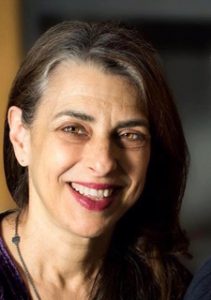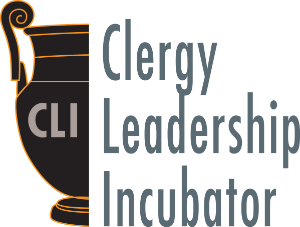On Being an Artist-Rabbi
 In a television interview shortly before his death, Abraham Joshua Heschel was asked if he had a message for young people. Watching live with my parents, I was a young person at the time, and Heschel seemed to speak directly to me, responding: “Build your life as a work of art.”
In a television interview shortly before his death, Abraham Joshua Heschel was asked if he had a message for young people. Watching live with my parents, I was a young person at the time, and Heschel seemed to speak directly to me, responding: “Build your life as a work of art.”
My rabbinate is an artistic practice.
The spiritual community I serve, in its complexity, is a creation under continuous construction, and not just what looks or sounds like fine art is our art, but, through this lens, our Bet Midrash, our Dialogue Project, our delivery of gemilut chesed, are all part of the artwork.
At Or Shalom, we are knitting together a congregation integrating new, younger, members with the older members who hold our community’s 40-year-traditions. The arts are a great meeting ground. We collect brightly colored plastic recyclables and have an annual mobile making event on the eve of Sukkot. While some hang the wild array, others invent a soup of last garden vegetables. Then we read the popular Portuguese fable, “Stone Soup,” and eat our first meal in the Sukkah.
Some other examples of the role of art in our sacred community:
- Much of our liturgical music has been composed by members.
- We’ve created a visual Megilat Esther for projection, sending out verses for illustration in any medium to all who want to participate.
- We spend at least one Saturday night in the cold months coloring and drinking cocktails.
- Our annual fashion show fundraiser for Vancouver’s Battered Women’s Support Services has Or Shalom members style one another from the closet of a charitable consignment store.
The arts are a great meeting ground, and if we focus on art as a way of being, as process rather than product, the arts provide a great playground, in the most serious sense of what “play” is.
I suggested a motto: “Or Shalom: Vancouver’s Spiritual Playground.” Printed on our baseball hats, (our one piece of swag) community members enjoy announcing to the world that “play” is a thing we do in the name of our spirituality, that we are adventurous and creative.
I’ve framed opportunities for deeper arts engagement that consist of bounded structures and resources without conceiving particular outcomes.
Here are some other examples:
- Inspired by text study undertaken by three cohorts of Simchat Mitzvah (what other congregations might call Bar/Bat Mitzvah) students , we have two new Torah mantles and a new ark curtain in-the-making. Each group of young people designed their piece in collaboration with adult artist-members. The community is ceding our traditional blue velvet, even velvet contributed in memorial, to this developing collection of fabric art. Even as there is loss in retiring objects that hold history, the vibrancy of the new textiles delivers an exciting message: our youth are creating the Or Shalom of the future.
- The Mincha Service on Yom Kippur used to be naptime, an extension of the afternoon break. Now the greater Jewish community wants to know what Or Shalom has planned, and we’re as packed as we are for Kol Nidre and Neila. This year’s Mincha was called “In the Belly of the Whale” and it included a collectively written choral composition and libretto. I provided text study and engaged a guest composer experienced in leading folks through a cooperative song-writing process. Deep ocean recordings and a variety of whale song provided inspiration and raw materials for the composition group’s consideration. The result was a visceral, riveting contemporary supplication.
- An example of text and art-process is our bi-weekly Heart-Centered Torah Study. Anyone can come, having read the weekly Torah portion. (Sometimes, to “play” requires coming into the studio with palate ready.) A member of the group has prepared a dvar torah based on an aspect of the weekly portion that resonates with them in this moment of their journey. A 20-minute free-write response follows, and then some sharing. Safe space is essential here — what is written or shared is private.
- And we do celebrate public spoken word. Inspired by a story slam at one of our retreats, we created “Koreh: Writers in the Sanctuary.” Four evenings a year we alternate between curated readings and story/poetry slams on themes such as Rest and Restoration, Roots and Families, Wandering and Return. In exploring the connection between artistic expression and identity, we honor our writing and story-telling talent and deepen our spiritual friendships.
More than any other program, Koreh has brought disenfranchised Jews back to the synagogue. And to say you’ve read in Koreh at Or Shalom is, at least locally, now resume-worthy.
With a desire to promote Or Shalom as an arts venue, we’ve collected what were one-off concerts into a 3-concert series called “Lights in Winter,” Klez/Jazz/Klez/Punk events held during January and February. It’s helpful to group events, name them, and repeat annually in the same season, or at predictable intervals, in order to increase participation.
Increasingly, lay partners are producing the programs I’ve described and proposing others. My load lightens as the vision is shared. And the community’s embrace of what is possible as we “play” has stimulated a desire to enhance our physical envelope, resulting in plans and fundraising for renovation of space for learning and programing and change in our sanctuary furnishings to allow for more flexibility.
It’s fun to share a about our programs, and a tiny bit of what we produce. Far more important is that art is, or is part of, our communal practice. My teacher Reb Zalman Schachter taught: “Be practiced in your practice!” The more we exercise the muscle of art practice, the more curious and sensitive we become, the more facile in our expression, the more flexible in our thinking, the more connections we make. We surprise and delight one another as individuals, as community, as Jews, as spiritual beings.
Reb Nachman of Bratzlav teaches on the nekudot tovot, the particles of goodness in us all. At the end of the teaching he says that the task of the prayer leader is to discern the nekudot, the “notes” of goodness in each person in the community and to create out of them niggunum (melodies) and harmonies. It is my task to deeply see the members of Or Shalom, offering individuals opportunities to sing their songs loudly or softly, interweaving and inter-being, as we continue to become more and more complementary and harmonious in lived Jewish community.
________
Rabbi Hannah Dresner believes it is her calling to work toward a Judaism of head, heart and physical being, so that our religious lives address the breadth of our human needs. She is serving her fifth year as spiritual leader of 225-household congregation Or Shalom in Vancouver, BC, the oldest existing Jewish Renewal synagogue. Ordained by the ALEPH Alliance for Jewish Renewal in 2014, she comes to the rabbinate with an MFA in visual art from the University of Chicago and an exhibition record and university teaching record in visual and performance arts. She is an alumnus of Cohort 2 of the Clergy Leadership Incubator (CLI) and a member of the Institute for Jewish Spirituality Hevraya program. A version of this talk was given at the National Cross-Training of the Kenissa: Communities of Meaning Network in December 2019.

